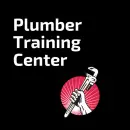To become a licensed plumber in Hawaii, you will first need to apply for and pass a state exam.
Plumbing services in Hawaii are becoming in-demand right now. This opens a lot of opportunities for people who can do plumbing works. If you are planning to become a plumber in the state, you need to obtain a plumber’s license first. However, the step doesn’t end here. You still need a separate contractor’s license to contract with your clients and perform plumbing services.
Setting the contractor’s license aside, plumbing licenses can be obtained by a journeyman worker plumber and master plumber. The journey worker plumber license is for individuals who will work as a licensed plumber while the master plumber license is for those who will operate as a business. If you are wondering how to become a licensed plumber in Hawaii, here are the steps.
1) Meeting the basic requirements
Before you apply for a plumber’s license, you have to make sure that you can meet the basic requirements. In Hawaii, the requirements are pretty straightforward. If you are aiming to get the license for a journey worker plumber, you need at least 5 years of experience working as a plumber. You also need not less than 10,000 hours of plumbing work done as this is required by the Uniform Plumbing Code. If you want a master plumber license, two years of experience as a journey worker plumber is required.
2) Applying for the license
During the license application, you have to download and fill out the Plumber License Application Form. This is available on the website of the Hawaii government. After filling out the form, you need to submit the application form together with the proof that you meet the basic requirements. There is an application fee which is listed on the application form. The submission should be directed to the address written on the application form.
3) Preparing for the exam
After the license application, you need to prepare for the exam. The exam will be based on the Uniform Plumbing Code. It is a closed-book exam with two parts: the first will test your comprehension about the business law and the second will ask about the specifics of your trade. There are a series of questions about regulations and construction codes, equipment and methods, tools, trade materials. Usually, examiners have a maximum of two hours to finish the exam.
Don’t worry, there are materials available so you can prepare for the exam. You can purchase them online or you can ask the review and testing centers if they can provide. If you know someone who took the exam before, you can also ask for a favor so you can borrow the review materials. Preparing for the exam is somehow the most important part of getting your license. If you don’t pass the test, you won’t be able to get a license. Allocate enough time so you can study the exam and review materials. Avoid distractions as much as you can.
4) Taking the plumber exam
Once you have applied for the license and it is approved by the board of regulators, you will receive an examination registration form from them. You need to fill out the form again and send it directly to the testing contractor. You will need to pay for an examination fee based on the exam registration form you have. When submitting your registration form, don’t forget to attach a copy of the approval letter and the receipt of your registration fee.
The testing contractor will approve your registration and you will be given exam date. You can check cca.hawaii.gov/pvl for the dates. Follow the schedule for the smooth examination. When taking the examination, remember all the information you learned from your review. Make sure to pass the exam so you won’t need to apply again next time.
5) Paying the license fee
When you pass the examination, the last process of getting your license is paying the license fee. This will enable you to obtain your license. The fee is usually written on your application. It should only be paid after successfully passing the exam as it is the only way to qualify for a license. So, throughout the process, there are a lot of fees involved: license registration fee, exam fee, and license fee. All of them are needed until the very end of the process.

